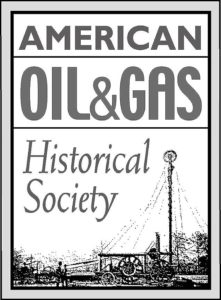March 18, 1937 – New London School Explosion Tragedy –
With just minutes left in the school day, a natural gas explosion destroyed the New London High School in Rusk County, Texas. Odorless gas (a residual natural gas called casing-head gas) had leaked into the basement and ignited with an explosion heard four miles away. East Texas oilfield workers — many with children attending the school — rushed to the scene, as did a cub reporter from Dallas, Walter Cronkite.
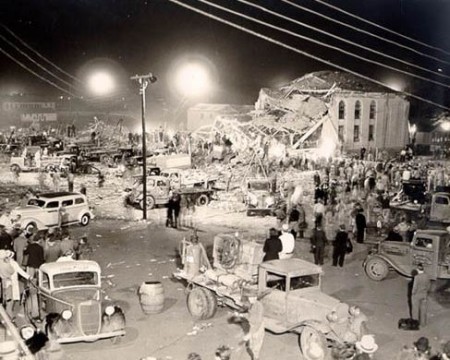
Roughnecks from the East Texas oilfield rushed to the devastated school and searched for survivors throughout the night. Photo courtesy New London Museum.
Despite desperate rescue efforts, 298 people were killed that day (dozens more later died of injuries). The explosion’s source was later found to be an electric wood-shop sander that sparked odorless gas that had pooled beneath and in the walls of the school. As a result of this disaster, Texas and other states passed laws requiring that natural gas be mixed with a malodorant to give early warning of a gas leak.
Learn more about the tragedy in New London School Explosion.
March 18, 1938 — First Offshore Well drilled in Gulf of Mexico’s Creole field
Gulf of Mexico oil production from a well drilled by Pure Oil and Superior Oil companies helped launch the modern offshore industry. The Creole oilfield in Louisiana’s offshore Cameron Parish was the first discovered in the open waters of the Gulf, according to the Louisiana Department of Natural Resources (DNR).
“A look back at both the Creole platform and others that followed after World War II provides a glimpse of history in the making,” noted Offshore magazine on the 60th anniversary in 2014.
More offshore wells followed, including the Kerr-McGee drilling platform, Kermac Rig No. 16, which in 1947 became the first offshore rig in the Gulf of Mexico that was out of sight of land. By the end of 1949, the offshore industry had discovered 11 oil and natural gas fields. The first mobile drilling platform, Mr. Charlie, began drilling in the Gulf of Mexico in 1954.
Learn more in Offshore Oil History.
March 20, 1919 – American Petroleum Institute founded
Tracing its roots to World War I when the petroleum industry and Congress worked together to fuel the war effort, the American Petroleum Institute (API) was founded in New York City. Within two years, the organization had improved an 1876 French scale to measure petroleum density relative to water — a standard later adopted and called API gravity. Based in Washington, D.C. since 1969, API has lobbied on behalf of major oil and natural gas companies while maintaining standards and recommended industry practices.
March 20, 1973 – Pennsylvania Boom Town recognized as Historic
The once famous oil boom town of Pithole, Pennsylvania, was listed in the National Register of Historic Places. An 1865 oilfield discovery at Pithole Creek launched a drilling boom for the early U.S. petroleum industry, which had begun six years earlier in nearby Titusville. Pithole’s oil production would lead to construction of the nation’s first oil pipeline. From beginning to end, the once famous boom town lasted about 500 days.
Learn more in Oil Boom at Pithole Creek.
March 21, 1881 – Earth Scientist becomes USGS Director
President James Garfield appointed John Wesley Powell director of the United States Geological Survey (USGS), a scientific agency established two years earlier. Powell, who led USGS for the next decade, laid the foundation for modern earth science research.
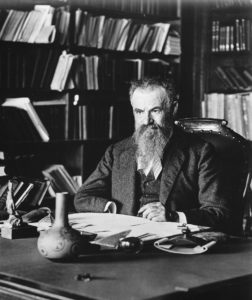
John Wesley Powell at his desk in Washington, D.C., in 1896. Photo courtesy Smithsonian Institution.
Born in 1834 at Mount Morris, New York, Powell was a Union officer during the Civil War, where he lost an arm at the Battle of Shiloh. After the war, he became a respected geologist and expedition leader, organized early surveys in the West, and helped establish USGS in 1879.
Powell advocated the national mapping standards and geodetic system still in use today. In 1884, Powell testified to Congress, “A Government cannot do any scientific work of more value to the people at large than by causing the construction of proper topographic maps of the country.”
March 23, 1858 – Pennsylvania Rock Oil Company reorganizes as Seneca Oil
Investors from New Haven, Connecticut, organized the Seneca Oil Company with $300,000 in capital after purchasing the Titusville leases of the Pennsylvania Rock Oil Company, which had been founded in 1854 by George Bissell.
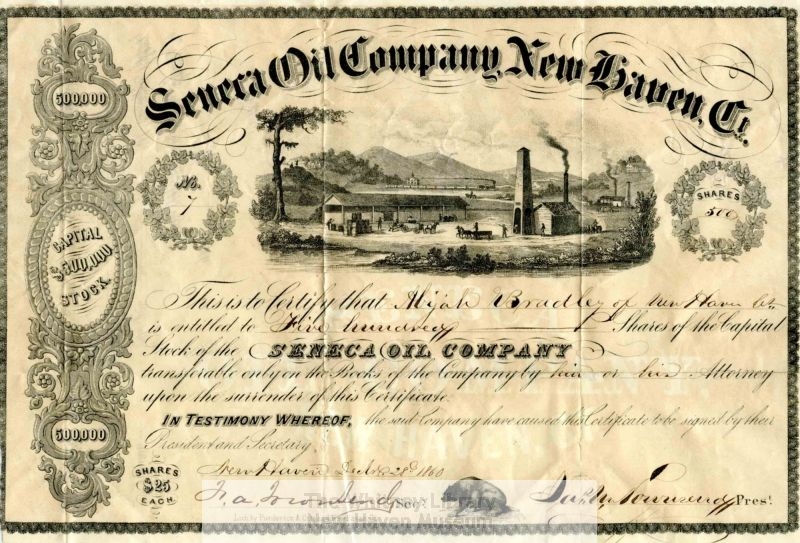
Seneca Oil drilled the first U.S. well. Image courtesy New Haven Museum.
Bissell, who had investigated oil seeps south of Titusville, originated the idea of producing and refining oil to make kerosene lamp fuel. The New Haven investors nevertheless excluded him from the new company. “The New Haven men then put the final piece of their plan into place with the formation of a new company,” noted oil historian William Brice, PhD, in his 2009 biography of Edwin L. Drake.
Learn more in George Bissell’s Oil Seeps.
March 24, 1989 – Supertanker Exxon Valdez runs Aground
The Exxon Valdez supertanker ran aground on Bligh Reef in Prince William Sound, Alaska. The accident, which came after nearly 12 years of routine oil tanker passages through Prince William Sound, resulted in a massive oil spill. Tankers carrying North Slope crude oil had safely passed through the sound more than 8,700 times.
Eight of the Exxon Valdez’s 11 oil tanks were punctured and an estimated 260,000 barrels of oil spilled, affecting hundreds of miles of coastline. Investigators later found that an error in navigation by the third mate, possibly due to fatigue or excessive workload, had caused the accident.
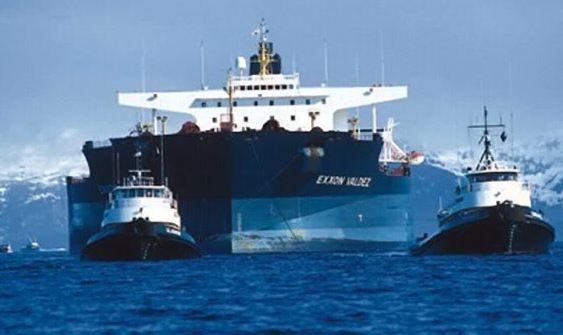
Shown being towed away from Bligh Reef, the Exxon Valdez had been outside shipping lanes when it ran aground in March 1989. Photo courtesy Erik Hill, Anchorage Daily News.
When the 987-foot tanker hit the reef that night, “the system designed to carry two million barrels of North Slope oil to West Coast and Gulf Coast markets daily had worked perhaps too well,” noted the Alaska Oil Spill Commission. “At least partly because of the success of the Valdez tanker trade, a general complacency had come to permeate the operation and oversight of the entire system
As result of the accident and spill, the Oil Pollution Act of 1990 mandated that all new tankers be built with double hulls and required the phasing out of single-hull tankers in U.S. waters. The Exxon Valdez was sold for scrap in 2012.
Learn more in Exxon Valdez Oil Spill.
_______________________
Recommended Reading: A Texas Tragedy: The New London School Explosion (2012); Offshore Pioneers: Brown & Root and the History of Offshore Oil and Gas
(2011); Cherry Run Valley: Plumer, Pithole, and Oil City, Pennsylvania, Images of America
(2000); The Powell Expedition: New Discoveries about John Wesley Powell’s 1869 River Journey
(2017); Myth, Legend, Reality: Edwin Laurentine Drake and the Early Oil Industry
(2009); The Exxon Valdez Oil Spill, Perspectives on Modern World History
(2011). Your Amazon purchase benefits the American Oil & Gas Historical Society. As an Amazon Associate, AOGHS earns a commission from qualifying purchases.
_______________________
The American Oil & Gas Historical Society (AOGHS) preserves U.S. petroleum history. Please become an AOGHS supporter and help maintain this energy education website and expand historical research. For more information, contact bawells@aoghs.org. Copyright © 2024 Bruce A. Wells. All rights reserved.


